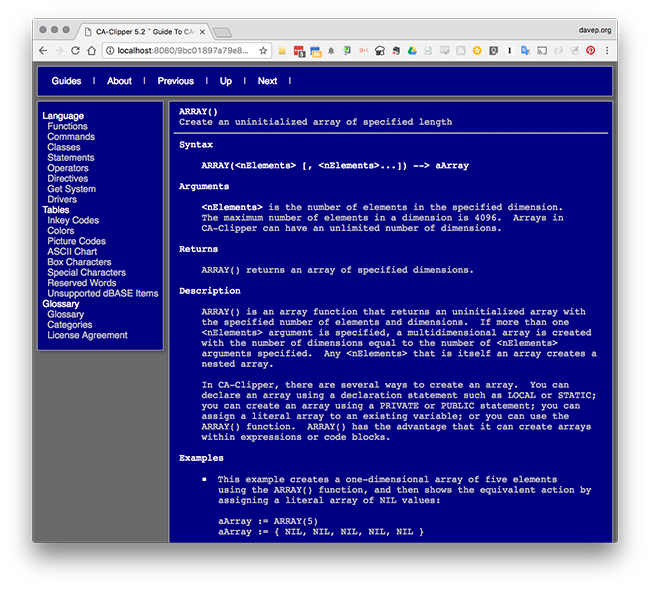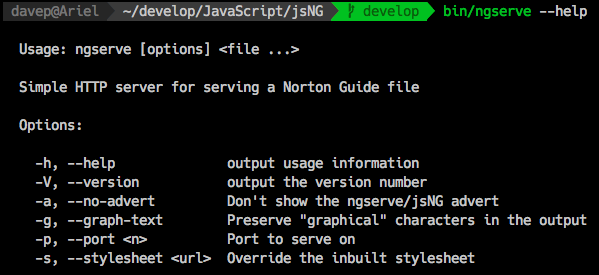jsNG
Posted on 2017-03-10 10:14 +0000 in Coding • 3 min read
Like many programmers, I have a couple of "Hello, World" projects that I've carried with me over the years. One is 5x5 (which has been used to get to grips with things as diverse as the Palm Pilot and GNU emacs). Another is Norton Guides database readers.
I've made Norton Guides tools that have allowed web servers to serve guides
(w3ng), that have allowed you to convert guides to HTML (ng2html), that
have let you read guides on OS/2 and GNU/Linux (eg) and also have let you
read guides in Microsoft Windows (weg). It's a problem I know fairly well
and one where I know the solution well enough so I can concentrate on
learning the new language or environment.
Recently I wanted to get to grips with some "pure" ES6 coding while also getting to know node.js. A new version of the Norton Guide code, written for this environment, seemed like a good thing to do.
And so jsNG was born.
At its core is a library of code for opening and reading data from Norton Guides databases. While I doubt it's good ES6 code, or even good node.js code, it's been very useful in giving me a fun problem to solve and it'll carry on being something I'll tweak and tinker with by way of trying new things out.
On top of this I've built a handful of tools for working with Norton Guides
databases. The most useful one at the moment (the others are more in the
"test the library" than the "make something handy with the library"
category) is ngserve. This is designed as a simple Norton Guides database
HTTP server.

When run, you give it a list of guides to serve:

and it does the right thing. It has a small number of command line options that help configure what it does:

Possibly the most useful are the ones that let you change how it handles "higher" DOS characters and, if you don't like the default colours and stuff, the option that lets you point to your own style sheet (note for now you'll need to host the stylesheet somewhere else -- ngserve won't serve it for you; I'm aiming to change that in some way in the near future).
jsNG does have a fairly basic design compromise at its heart. In the very early version I started out using the async functions for opening and reading the guides. This got very tedious very quickly and I could see that it was going to make for a very messy library with a very messy interface. While it might not be in the spirit of node.js programming I decided to go with the sync version of the file IO functions and code up the core library based around this.
This approach also means that I took another leap that I never have done with Norton Guides before: rather than doing the traditional thing of keeping an open handle into them and reading direct from the file as you navigate the guide, I simply read it all into a buffer in one go and keep it in memory. This is a "guides are small, memory is cheap, things will go faster" approach.
It does mean that when you load up a load of guides into ngserve they're
all sat in memory. The upside of this is that things should be a lot faster
and the code is a lot easier to follow (I think). To put this in some
perspective: I have a directory here that contains 110 Norton Guides files.
They total 36M in size. If that seems like a lot of stuff to hold in
memory... remind me how much is being used by your web browser so you can
look at some hilarious kittens. ;)
Anyway, that's where I'm at with it right now. The code is mostly settled
and mostly tidy. I need to write up some documentation for it (and so I need
to take a look at good JavaScript documentation tools) and perhaps tinker
with ngserve a little more. I'd also like to do a new version of ng2html
with this -- a version that makes it far easier to control the style of
the output. I'm also tempted to do a CLI-based reader in pure ES6; something
similar to EG or WEG.
All in good time.